New Jersey’s Lower Raritan
Raritan River Basin
|
NEW ESRI StoryMaps: What's On Our Shelves & NWNL Song Library & No Water No Life ESRI |
Raritan River Basin
Heather Fenyk
Director of the Lower Raritan Watershed Partnership
Alison M. Jones
NWNL Director and Photographer
All images © Alison M. Jones. All rights reserved.
Heather Fenyk is a PhD researcher, working in New Jersey’s Lower Raritan River – a waterway subject to industrial pollution, beginning with colonial mills on this early connector between New York and Philadelphia. As founding director of the Lower Raritan Watershed Partnership, Heather has worked to support the role of citizen expertise in environmental decision-making. Her research “runs the gamut from environmental issues, to health issues, to aiding community-based, participatory research.” Her current focus is mostly on climate change, from the perspective of planning and preparations to assist communities relocate in the face of climate change.
At Rutgers University (New Brunswick NJ) she teaches “Challenges and Opportunities in Environmental Planning and Landscape Architecture,” and a Studio Class in the Bloustein School of Planning and Policy. These classes involve applied work for the students. Her next Studio will be 100% focused on coastal resiliency in the Lower Raritan.
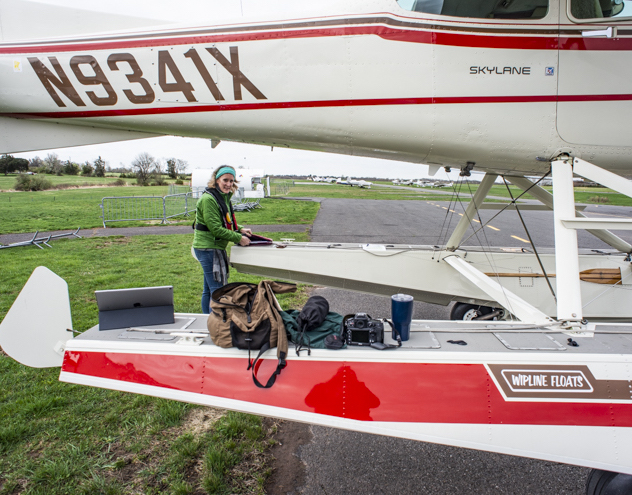
NWNL Heather, welcome to our office. I’ve wanted to include you for a while in our VoR, given your credentials for promoting watershed conservation – especially among students. Let’s begin by discussing the “applied work” opportunities you offer in your Rutgers classes.
HEATHER FENYK I ask our students to focus on coastal resiliency – basically preparations for climate change, including sea-level rise, river and rain inundation, and stormwater-flow inundation.
The Lower Raritan is unique in that it’s getting doubly clobbered by coastal impacts that climate changes are throwing at us, and by all the hard surfaces in this incredibly urbanized area due to a lot of development. In much of the Lower Raritan, over 50% of the land is covered by hard surfaces.
NWNL Is flooding is the biggest issue?
HEATHER FENYK Yes, for a variety of reasons, I think flooding is one of our most significant issues. Flooding the immediate risk when floodwaters come into our homes and communities. But with flooding, we also have contaminants that wash up. All the soil and sediments that get churned up in flood situations are deposited upland.
Unfortunately, we just don’t know what’s in that stuff. We don’t have a good sense for what’s being left behind when floodwaters recede. So threats are not just flooding itself, but seemingly also this legacy contaminant issue.
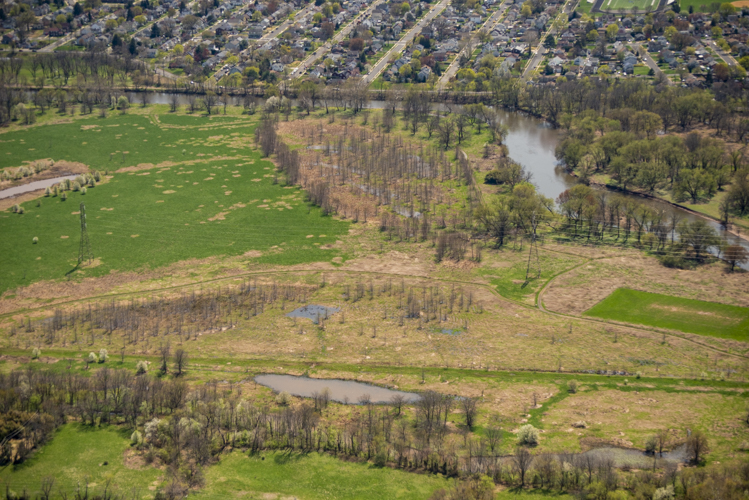
NWNL That gets us right into a discussion of PFOAs, the focus of the new Dark Waters movie that addresses the “forever chemicals” used in Dupont’s extremely profitable production of Teflon. This movie, set in the Ohio River Basin, exposes the corporate coverups of toxic waste and products that are deadly to humans and livestock perpetrated in order to protect their profits.
Apparently, early use PFOAs in World War II expanded as DuPont and 3M grasped its domestic potential application as a surface resistent still found in in Teflon, carpet coatings, fire-fighting foam and such. One determined lawyer has pursued this still – ongoing issue throughout his entire career. As a result, Parkersburg WV residents have finally received financial compensation. This lawyer is now preparing a class action case for us all against DuPont stating PFOAs are in everyone’s system today.
So, Heather, what have you heard is buried in that Lower Raritan sediment; and what do you know about PFOAs?
HEATHER FENYK What do any of us really know? In terms of the public health risk, I think we’re assured by everyone that toxins are not good, and that we’re all affected. But what does that mean? Some folks may have more or less concentrations. To evaluate these risks and impacts, we’d have to test on an individual basis.

NWNL And for what you just explained, individual exposure to sedimentary toxicity would occur when sediment floods into homes or streets – right?
HEATHER FENYK Well, that’s one potential exposure. This river is not very deep, so folks are able to go out right along its banks into the muck to recreate. When Lower Raritan Watershed Partnership goes out in the Rutgers Research Vessel, the captain very cautiously only goes out at high tide, so that we don’t get stuck in muck with who knows what’s in there?
As well, we see folks who go out jet-skiing get stranded on a regular basis on “sandbars” that are simply “muck bars”, or sediment bars. Folks go crabbing in these mudflats. Many Lower Raritan docks are built up essentially onto the mudflats; and access to and from them occurs as sediments are being pushed up and down, depending on the tidal flows.
So the risk of contaminant exposure is not just from flooding. It occurs during active recreation. We just did an historic and massive floodplain, mudflat cleanup during the lowest tide of the year. We pulled 56 tires from the mudflats – but, what risks were we posing for ourselves and the volunteers?
NWNL Where on the river was that cleanup?
HEATHER FENYK It was at Donaldson Park in the New Brunswick area of Highland Park. We photographed tires with the mud and New Brunswick skyline behind it. We don’t know what’s in that miud. We just don’t know about PFOAs.
NWNL Do PFOAs get into fish?
HEATHER FENYK They do, but we have not done any fish-issue studies for that. We’re limited by being a 100% volunteer organization.
NWNL Please describe the non-profit Lower Raritan Watershed Partnership [LRWP] you established four years ago.
HEATHER FENYK LRWP is New Jersey’s newest watershed association. It has been an idea held by a collective of folks interested in water quality for 5-1/2 to 6 years. We’re working to get more information about water quality in the Raritan, then deliver that to the public so that they can make informed decisions about how they recreate, fish, swim, and otherwise use the water. As a nonprofit we are Board-run and 100% volunteer-run. We have a small budget that largely goes for insurance, since it is highly costly when you’re doing anything in the water, and we do water cleanups.
Our citizen science and civic science trainings are on water quality monitoring. Per our slogan, “Cultivating a culture of science and stewardship,” we feel that if folks understand the science and understand their environment and its natural history, that they will be active stewards, active and informed stewards, going forward, so that’s really kind of the bread and butter of our work is not just the data gathering, but data gathering to build this community of informed and engaged stewards.
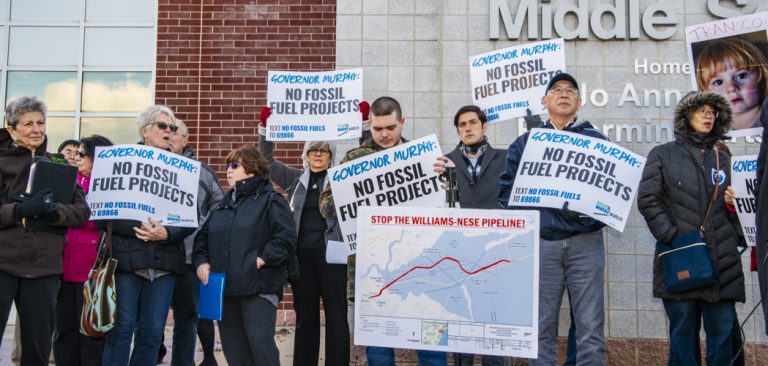
NWNL Is your data-gathering mostly focused on water quality?
HEATHER FENYK We do a couple of different kinds, such as water quality investigations at 35 inland watershed sites and streams – since we are watershed-based organization. We believe the health of the Lower Raritan is also the responsibility of those who live in the Upper Raritan; and if you aren’t aware of the state of the environment, you’re not going to be a champion for it.
To know what’s happening in our streams, we have 35 stream segments monitored on a somewhat regular basis by our stream keepers who’ve been trained and deputized to use a template, approved by the DEP, that gathers what we call “Visual Habitat Information.” Their basic survey covers what the environment looks like; takes the temperature of the water; measures the stream width and water flow velocity; and looks at possible erosion, foliage cover and invasive plants, and any developments in the area.
That information informs our understanding of the health of the waters downstream. Thus, we’ve established a baseline by which we can gauge impacts over time to see if development encroachment impacts these waterways, especially in correlation with climate change impacts. We’re very new. Four years of data doesn’t tell us much, but it can suggest trends. We also count benthic macroinvertebrates – the bugs that live on the stream bottom and are at the basis of the food chain. Those critters are especially sensitive to environmental situations and cannot withstand dirty water or temperature extremes. Thus, they tell us that how our stream is performing.
HEATHER FENYK In addition to our inland stream monitoring, LRWP has an active program of bacteria monitoring of the Lower Raritan itself. We run that in the summer months when we expect folks to be out in the river recreating and using the non-swimming public beach access points. We know people go out to launch kayaks, to crab, and often to fish in places that are non-swimming access points. Those are places that the State Department of Health does not monitor for pathogens.
Our concern is that folks’ usage of non-monitored points on the river create environmental justice issues. Poorer communities can’t necessarily access the cleaner beaches or those that are sanctioned for full immersion, primary-access swimming. But we do know folks go to cool themselves, recreate, fish, swim, and get sustenance on a regular basis. So LRWP tries to gather pathogens, bacteria, and fecal information to show how much poop is in our waters as an indicator of risk in those terms.

This year, we had our first full summer of pathogen-monitoring of the Raritan proper; and we will continue that. The reason our main focus is on the entire watershed is because we watch upstream and inland activities contributing to the Raritan’s main stem. Our broader watershed focus also offers a greater potential to build multiple communities around these separate streams. But the pathogens issue creates a good environmental justice story in its own right. That component is tremendous, reflecting a big concern for us.
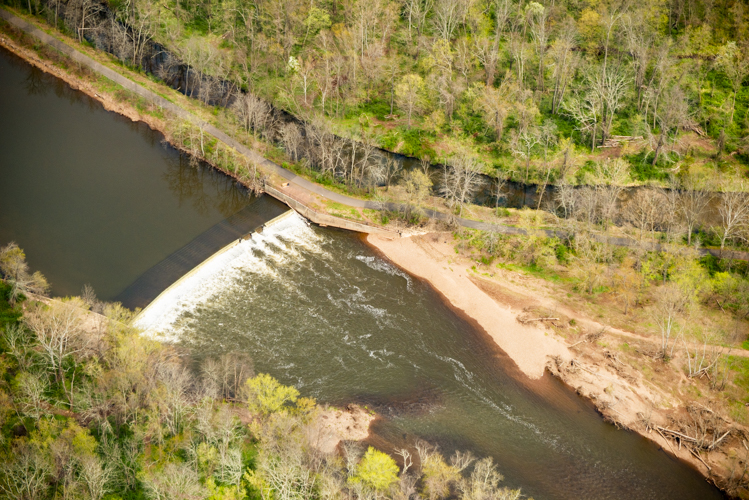
HEATHER FENYK One other partnership we’ve had involved a trial fish-tissue sampling with an Rutgers University entomology student several years ago. It wasn’t a very large sample size. It really just hinted at what we need to look at going forward.
PFOAs were not tested. That student basically only sampled heavy metals, since the student had research funding just for his dissertation. We kind of dovetailed with his work to get information ourselves, again with an eye to what can we do in the future.
NWNL I have no data at this point on PFOAs in the Raritan; but if they are in the Raritan and if Teflon investigators in West Virginia found PFOAs in dog and cattle tissue, I would assume PFOA “forever chemicals” could certainly be found in Raritan River and Raritan Bay fish. I encourage you to support any possible data-gathering on that.
NWNL Heather, you’ve been focused on the big picture: a critical NJ waterway, its water quality, its biodiversity and the human communities involved in, and affected by, the Raritan River and its tributaries. What about the possibility of establishing what one might call a “greenway” along the banks of the Raritan? Personally, I’d rather use the word “blueway.” Will it be possible to provide more access to the Raritan – be it a bikeway, a walkway, beach access points, viewpoints? it would be great to reconnect all species including humans to this river that supports life in Central New Jersey.
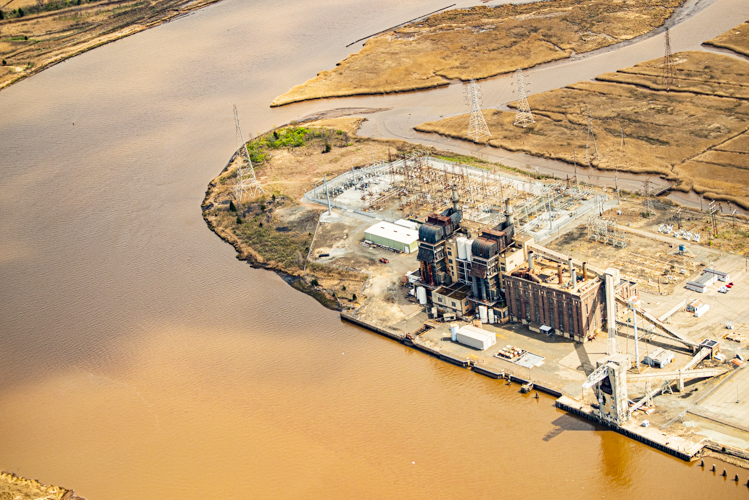
HEATHER FENYK We’re looking everywhere we can to find habitat connectivity. This effort is not just for people, but it’s absolutely for people. We believe that access is a “right.” So, we’re working mostly with graduate students in Rutgers “Landscape Architecture Department” to find connections to the river that can be cultivated. In doing this, we have a new program near and dear to my heart called #LookForTheRiver. I see this more as a campaign than a project. I feel it will encourage communities to connect to our river, despite our watershed being so covered by impervious, hard surfaces. Because of that we’ve really lost a sense of where historic streams were – a sense of our historic hydrology.
Hopefully #LookForTheRiver will prompt and assist communities to reconnect to their local historic hydrology and to understand their stormwater flows. Perhaps they’ll find a buried stream here or there. Perhaps their river’s history is in a culverted stream here or there. A house is sinking here. There’s a sinkhole there. A neighbor lost a car, because of a sinkhole. Previously ignored hydrology can explain why there is flooding here or there; and answer those who keep asking “Why do we have so much flooding?”
LRWP encourages communities to understand the land contours. Through our work, in their libraries, or in research, we want folks to develop a sense of the pre-colonial landscape; to find out where streams used to flow; to understand how their stream network connects to the larger river; and in some cases, to consider ways to “daylight” those streams.
We want people to look for the river. We really encourage folks to think about how their small streams ultimately connect to the river. So when I say this is a watershed organization, it is. But watersheds drain their water somewhere – to the river! That’s how it all sort of comes together.
NWNL Our project all uses the watershed as its unit of study. I explain that, it’s what happens on the land that determines the quantity and quality of water in the river.
HEATHER FENYK Last weekend we took a group out to the Monmouth Battlefield on one of our walking tours to hidden streams. This is one of the furthest reaches we have in the south. As we looked for the battlefield’s Molly Pitcher Stream, we discussed its battlefield orchards and impacts of the arsenic used as pesticides on proximate streams that flow to the river. What kind of arsenic loads are in Monmouth Battlefield area contributing to the Raritan River?
To the north, we have Duke Farms – the former Doris Duke Estate. It is right on the river just below the confluence of the Raritan’s North and South Branches. It has also created a legacy of pollutants, as there was a tremendous amount of pesticide used on the Doris Duke Estate.
NWNL Was that from toxins applied in Doris Duke’s 2,500+ acres of greenhouses and orchid conservatory? Did it accumulate in the nine lakes created from 40 farmsteads purchased by her father?
HEATHER FENYK Well, the ongoing pesticide pollution from this property was actually her father’s legacy. The Duke Farms property was the epicenter of the gypsy-moth epidemic in the 1940s and 1950s, because the family imported so many exotic plants. This tobacco magnate was obsessed with exotic plants, and thus this became the epicenter for an infestation that spread from NJ all the way to California.
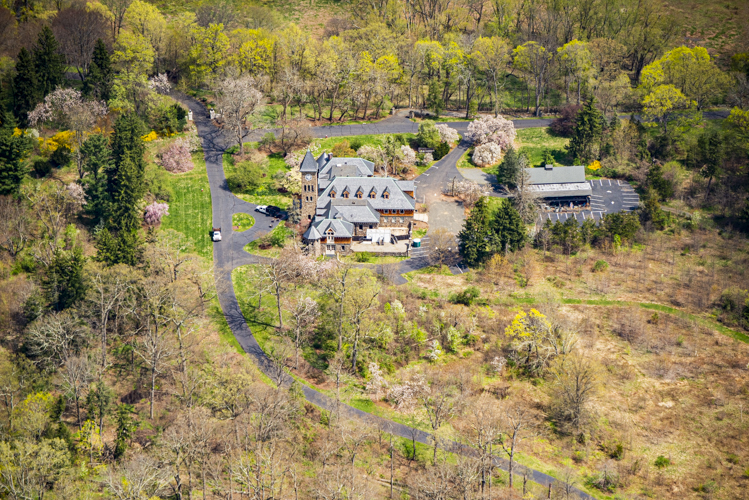
NWNL So what’s the significance of this fascinating story?
HEATHER FENYK My point is that “polluters” include more than those actively dumping industrial and urban waste into the river. The Clean Water Act did a wonderful job of kind of stuffing such waste back in the pipes and forcing waste-removal permits. I think there are still loads that are inappropriate for our waterways, and there are still polluters given too much leniency. This is critical since we still have modeling for Total Maximum Daily Loads [MDLs] on the Lower Raritan.
Unfortunately, the Lower Raritan is one of the few areas that doesn’t have this MDL data. The NJ State DEP argues that it’s too hard to model our convergence of salt and freshwater flows.
We know it has been done elsewhere. It’s been done in coastal New Jersey’s Barnegat Bay that is in a similar situation. But they have not done it for Lower Raritan. So I think that there is more of a toxic mix in our area than elsewhere, since they haven’t even gotten a handle on this issues in the Lower Raritan. Yet it’s the DEP’s responsibility per federal Clean Water Act laws to do so.
NWNL What about the San Francisco Bay or the Chesapeake Bay? What about other tidal estuaries and Heather, how does New Jersey rate against other states’ efforts to clean up their tidal estuaries?
HEATHER FENYK Well, our tidal portion is part of the New York-New Jersey Harbor Estuary. I couldn’t say how New Jersey rates, since I would have to study all the estuaries. I do think the Harbor Estuary Program is doing a great job of trying to understand what’s going on. But I also think that it’s been so focused on New York that New Jersey kind of gets forgotten.
NWNL Does the DEP have responsibility upstream of the Raritan Bay?
HEATHER FENYK They do, because the tidal portion of the Raritan goes all the way to Piscataway, our first site for pathogens monitoring.
In fact, the DEP map of the area extends, I think, outside of the Lower Raritan. Part of their purview includes Cheesequake Park and other coastal areas in that watershed, but they include inland areas as well. Since we’re so new, I’m still just trying to get a feel for all of this. LRWP has taken the DEP at its word that they are working there, and until we further expand our knowledge about the watershed as a whole, we’re not going to probe that.
We’ll start to do so as we see need and become more informed. None of us are water scientists. I’d say we’re “bubblegum and duct tape.” We’re grassroots, ground-up, concerned citizens trying to figure this stuff out.
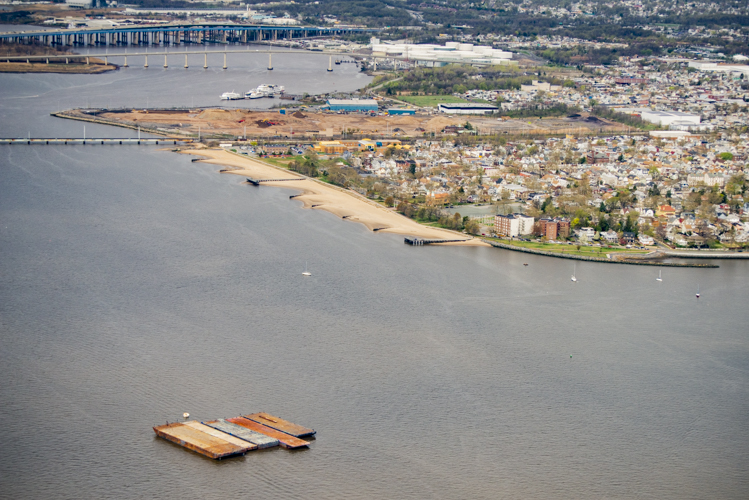
NWNL Heather, you’re more than bubble gum and duct tape! I remember getting a phone call from you saying, “How did you start NWNL?” We talked about mission statements and methodology. It feels like that was ten years ago – so that is a tribute to the fact that in just four years you are well established as a big player within the greater Raritan River Basin. The Raritan Headwaters Association is now a strong union of the stewards in the Upper Raritan’s North and South Branches. You represent the Lower Raritan and there’s the Raritan Baykeeper and the Mill Brook-Stonybrook Watershed Alliance, with whom you work with right?
HEATHER FENYK Absolutely. We reach out to Baykeeper regularly. It seems their big interest now is around the Liberty State Park where have been a lot of land dispute issues. Their energies have also been focused on post-Sandy, climate change adaptation. Thus, they’ve reintroduced oyster reefs, as part of the Billion Oyster Project.
With respect to the Raritan Headwaters Association, they send their water down to us. We absolutely want to stay in conversations with them and work with them – and we do. We have at least one cleanup with them. We worked with Stony Brook Millstone Watershed Alliance last year. Hopefully in April 2020, we’ll have all three of these basins converge for a big cleanup on the Mile Run Brook, on the boundary of New Brunswick and Franklin NJ.
I think those two organizations are the one-two punch of the two oldest watershed associations in the country. Stony Brook Millstone, now the Watershed Institute, represents #1, and Raritan Headwaters is #2, as the oldest watershed organizations in the country.
NWNL Do you have any other points you’d like to share before you and I review my aerial photographs from our joint flyover of the Raritan River – courtesy of a grant from LightHawk.org.
HEATHER FENYK Yes, I do have something that I want folks to seriously consider. Right now, microplastics are a hot topic; but they are not our primary area of interest. It’s definitely an issue of concern, but there are so many other much more egregious pollutant concerns that we need to address. So, strategically, we don’t want our energies and other resources diffused by microplastics right now.
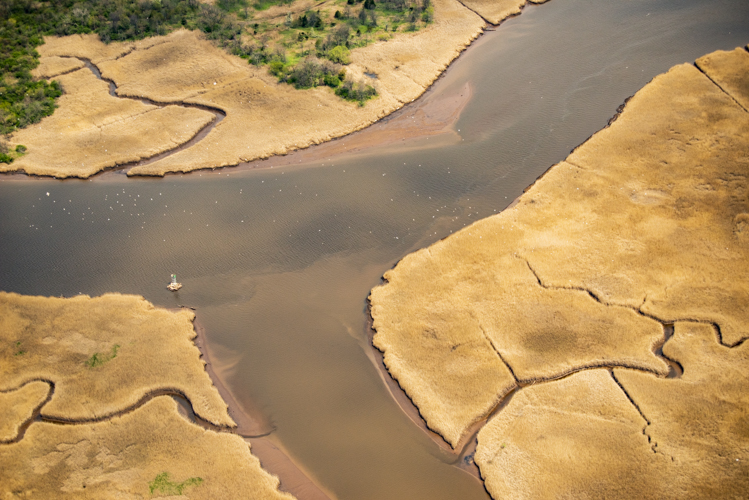
NWNL What elements do you think are more critical to you than microplastics?
HEATHER FENYK Well, I don’t know enough about PFOAs; I imagine we really should be digging in and sampling our sediment to evaluate those contaminants. Meanwhile in the Raritan, we have mercury. We have arsenic. We have PCBs. We have the leads. We have all sorts of the heavy metals that we don’t know much about. There was a sediment study of the Raritan, called MERI. Those reports on our website right now, identified several hotspots on the Raritan. The study doesn’t include PFOAs and a couple of other things, but I think it is a really good starting point.
The question is, where do we go from that study to address cleanup?
NWNL And there’s that classic question that came up in the Hudson River regarding toxins from General Electric: Should we stir up those pollutants in the sedimentary benthos of the river? Or is it better just to let sleeping dogs lie?
HEATHER FENYK Yes, that’s also been a question for us when we’re doing things like the low-tide mudflat cleanups. Do we go in there? But we also know that in areas like that, stuff’s going to get stirred up pretty well anyway. It’s in the deeper areas that we wonder about. Plus, we have all these dams that are being removed
To your question about what is most pressing, I think we need to figure out what could most significantly impact human health, especially during floodwater intrusion. Microplastics do have a significant impact globally, but we have living communities that are right now at risk in ways we don’t even understand. People struggling economically are taking risks to feed themselves. They’re going out crabbing and fishing for unhealthy food for their families consumption.
NWNL Yes, I ran into this when I first started documenting the Lower Raritan. At that old Jersey Central Power & Light generating station on the Lower Raritan, there was a wonderful Portuguese fisherman with a bucket of eels. I said to him in my best Portuguese, which is minimal, “You can’t eat that.” Sign language worked better. He sign-languaged back to me, “But my family’s hungry.” Right there I faced a sad dilemma. He had to provide food for his family. There have been moments like that during my NWNL project that just grab my heart.
HEATHER FENYK That’s how the LRWP started. Our efferts emerged out of concerns for food security concerns. In our work with community gardens, where we found that because of lead in our soils, we needed community gardens with raised beds. We were talking and working with the folks mostly from Oaxaca, Spanish-speaking community members. We asked, “Where are you getting your protein? There aren’t many grocery stores around here, if any.” Their answer was, “We get it from the Raritan.”
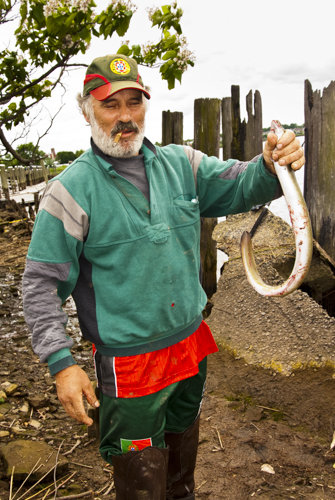
NWNL That’s how you started?
HEATHER FENYK Yes, LRWP came out of the New Brunswick Community Food Alliance, which I was involved in starting up as well.
NWNL That’s nice to know. I didn’t know that and although it defines your origins, it’s nice to have this as the end of our interview. Perhaps it will encourage other gardeners to see the inter-related, holistic aspects of all watersheds. I thank you.
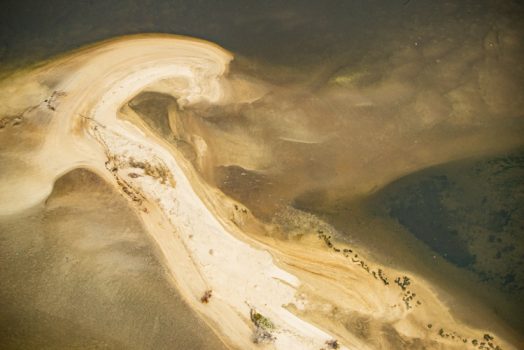
Posted by NWNL on November 26, 2019.
Transcription edited and condensed for clarity by Alison M. Jones.
All images © Alison M. Jones. All rights reserved.
